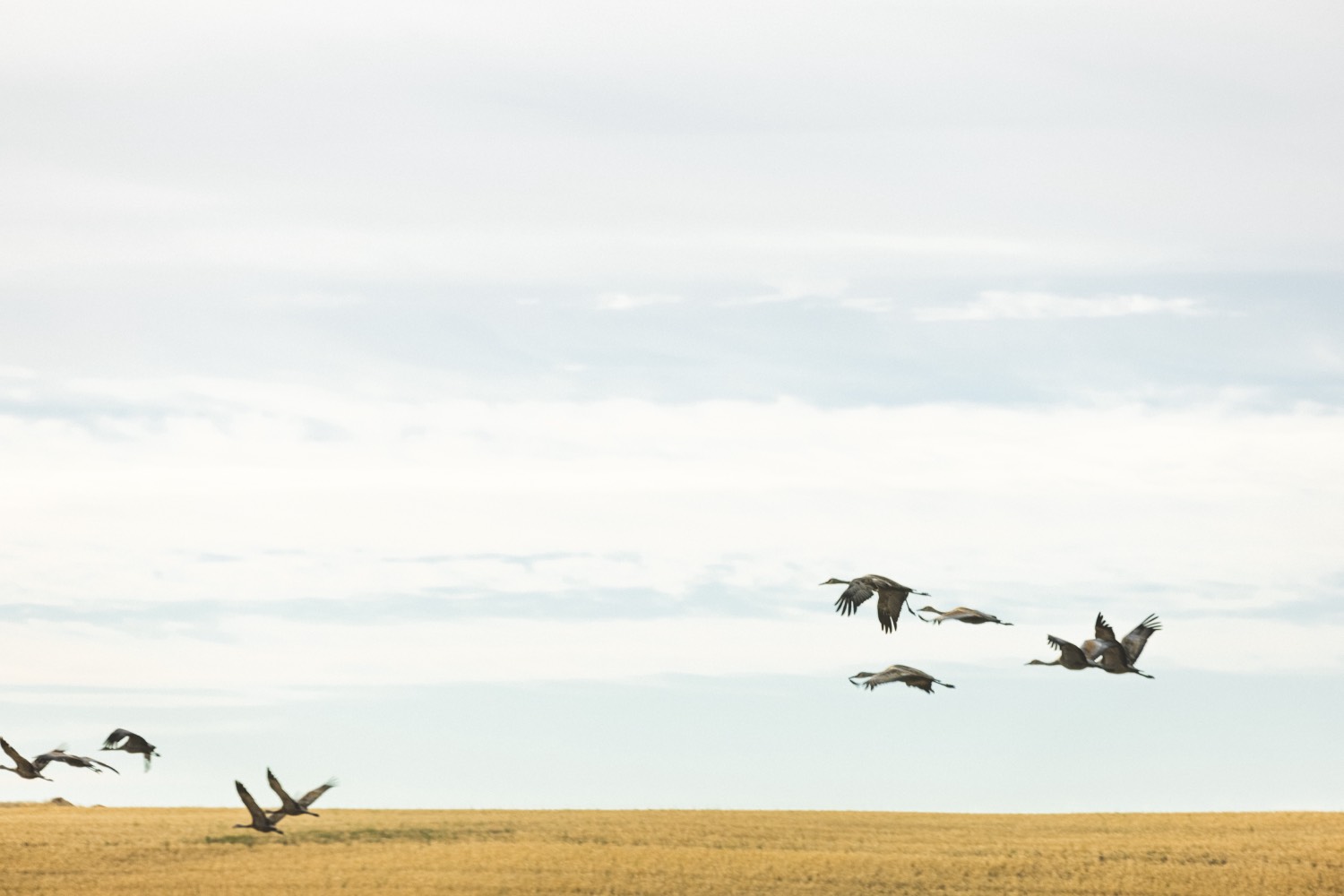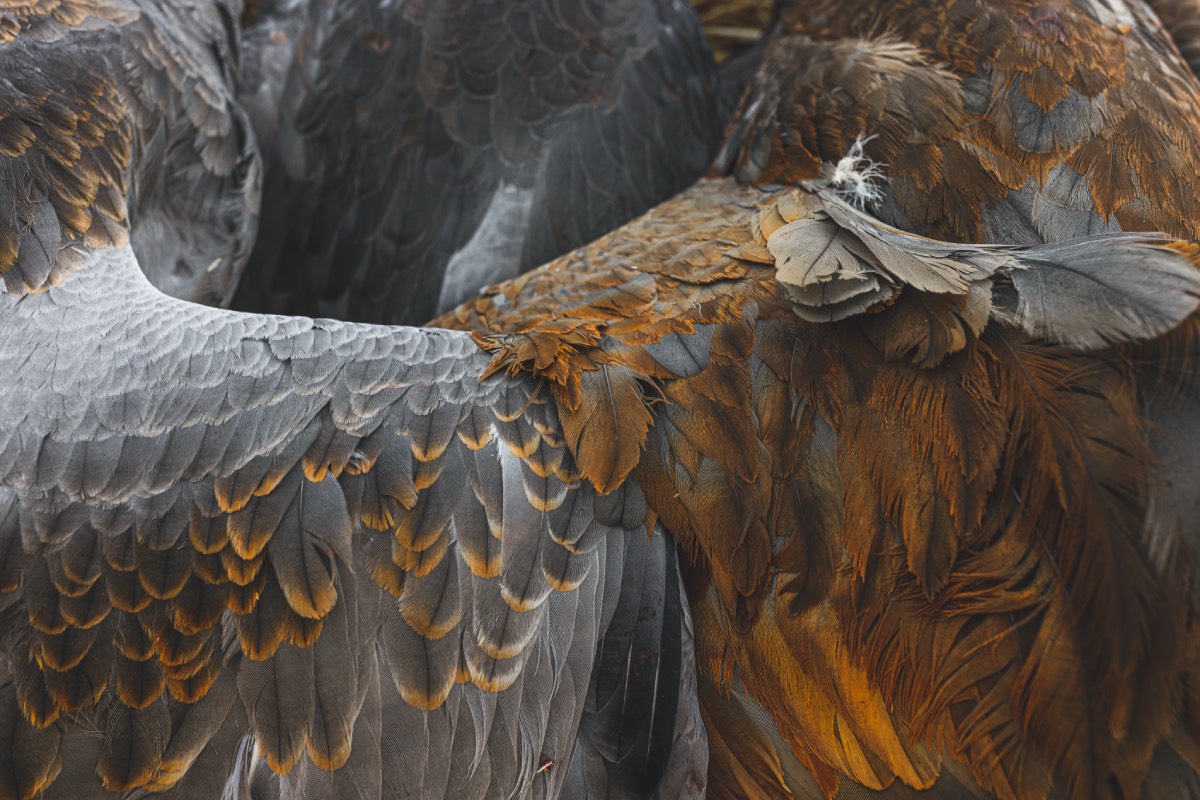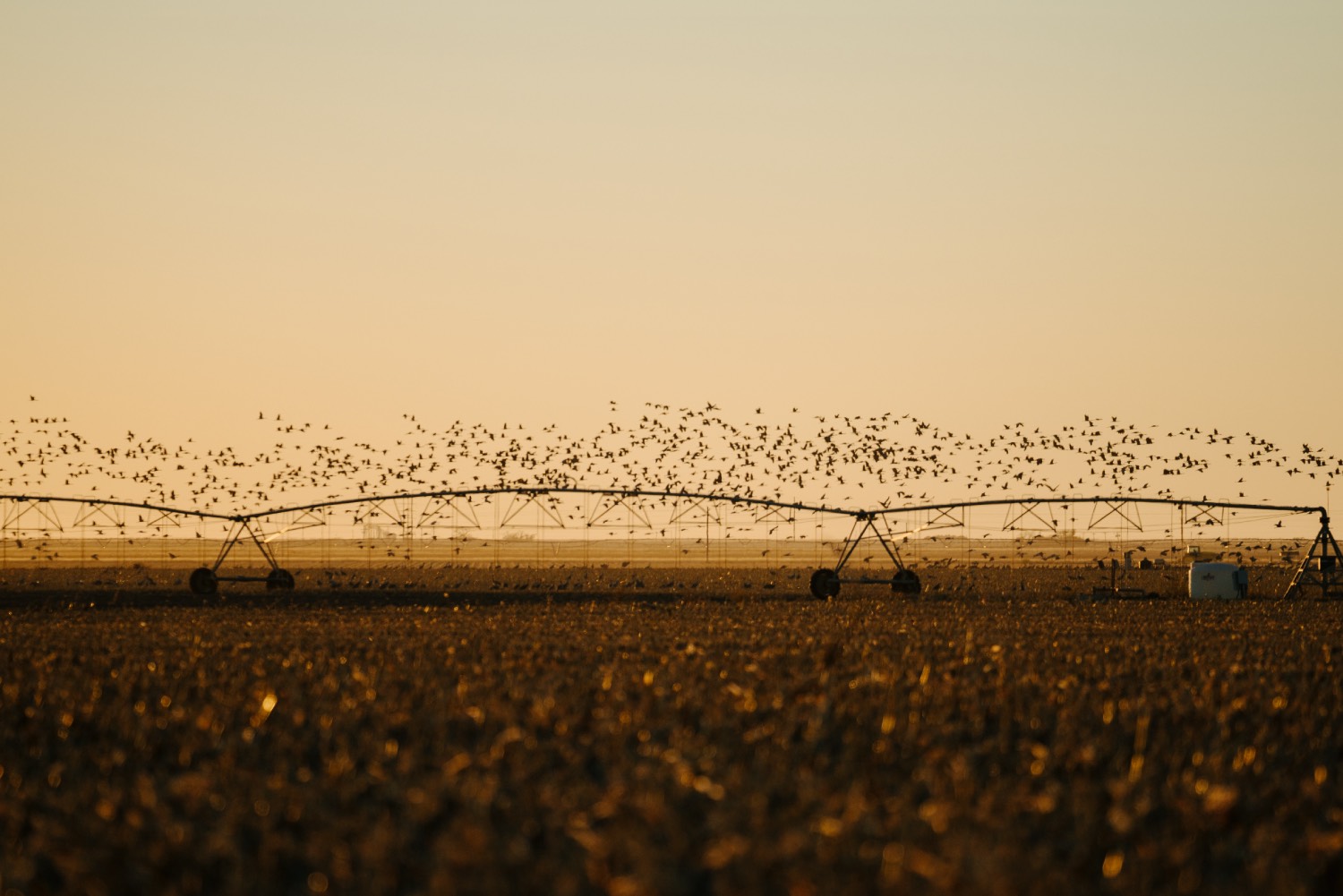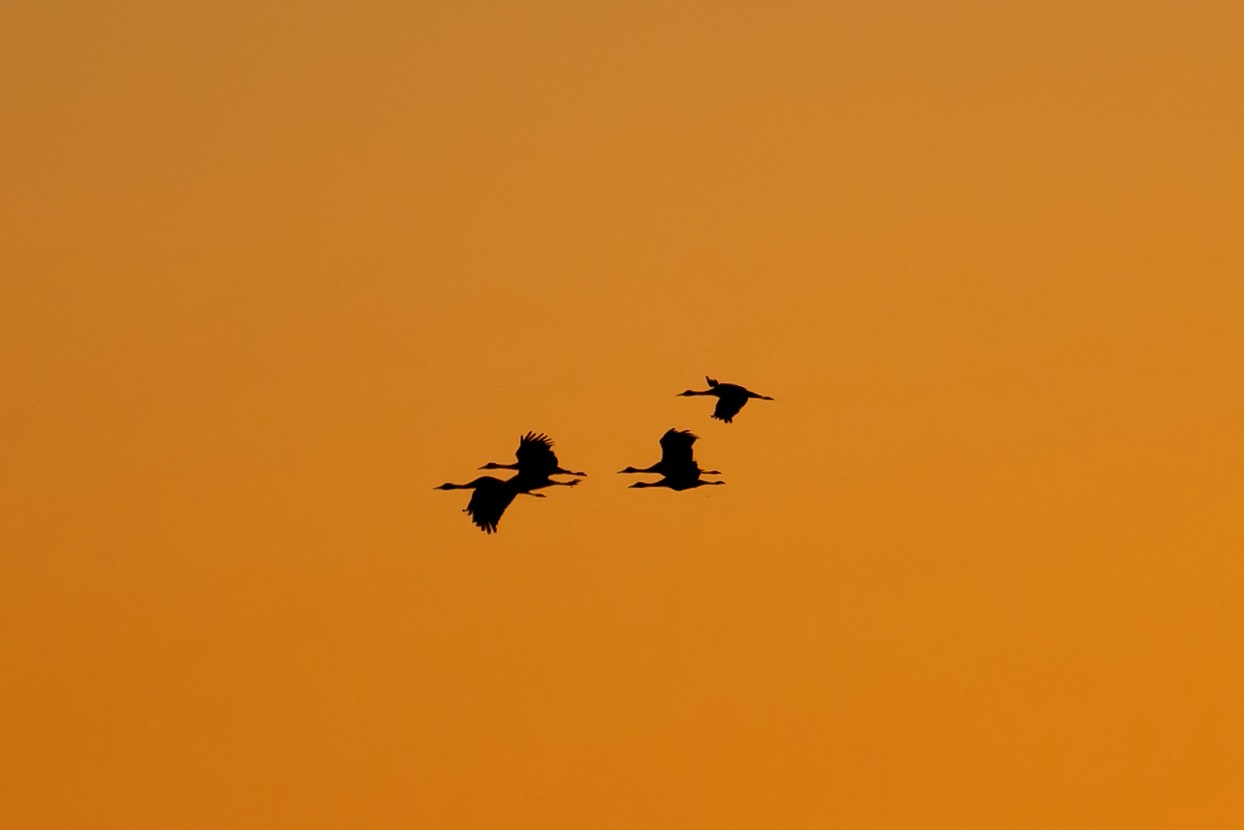
Photography by Rob Kinney
The Sandhill Crane is a large species of crane native to North America. We hunters may know them as the “ribeye in the sky” but we also know they’re an incredibly old and impressive species. Almost dinosaur-like. Their annual migration, during which they travel thousands of miles from their breeding grounds in the northern United States and Canada to their wintering grounds in the southern United States and Mexico, is one of Earth’s oldest and largest migrations.
In terms of physical characteristics, Sandhill Cranes stand at an average height of 4 feet and have a wingspan of up to 7 feet. They have a long neck and legs, and a distinctive red patch of skin on their forehead. Their plumage is gray, with a white crown and black primary feathers. Juvenile birds are similar in appearance to adult birds, but have rust-colored plumage. You may also notice some rust colored plumage in adults from the mud in which they’re preening themselves.

Photography by Rob Kinney
One of the most notable characteristics of the Sandhill Crane is their vocalizations. These birds are known for their loud, trumpeting calls, which can be heard for miles and will get the blood pumping of any hunter. The calls are an important aspect of the cranes' social lives and help them to communicate with one another while on migration.
The migration itself is a spectacular event, with thousands of Sandhill Cranes gathering at major stopover sites like the Hiwassee Wildlife Refuge in Chattanooga, Tennessee and the Platte River in Nebraska, before continuing their journey.
The Hiwassee Wildlife Refuge in Chattanooga, Tennessee is located along the Tennessee River and serves as an important stopover for thousands of Sandhill Cranes each year. The birds use the refuge as a staging area, where they can rest and refuel in the shallow wetlands of the refuge before continuing their journey. Thousands of tourists come to viewing areas and do guided tours to see the couple of months that the cranes winter in the refuge. When thousands of them get up at once and circle like a cyclone in the sky, it's not something easily forgotten.
The Chickamauga Dam, Harrison Bay State Park, and the Tennessee Riverpark are also popular sites near Chattanooga for the cranes.
Another important stopover, and the largest, is the Platte River in Nebraska. The Platte River is a major flyway for migratory birds, and the sandhill cranes use this area as a rest stop and will feed on leftover corn that wasn’t harvested on farms in the area. Several other locations in Nebraska offer important resources for the Sandhill Cranes during their migration, like the Rainwater Basin, the Lincoln County Wetlands, and the Iain Nicolson Audubon Center.

Photography by Patrick Tragesser
Historically, Sandhill Cranes were an overabundant species. As hunting pressure increased, however, the population of Sandhill Cranes began to decline, and by the early 20th century, the species had become scarce in many parts of its range.
In the early 1900s, conservation efforts were put in place to protect the Sandhill Crane and other migratory bird species. Laws were passed to regulate hunting, and hunting seasons were shortened or closed altogether in some areas. These efforts helped to stabilize the population of Sandhill Cranes and allowed the species to recover. The Sandhill Crane is still classified as a threatened species, but the strict hunting measures have the majestic dinosaur of a bird on the up and up.
Whether you have an opportunity to witness the migration of this incredible bird or a rare opportunity to hunt them, it’ll be an incredible memory and scene to see. They’re a bit of a gawky, awkward bird at times, and they’re guaranteed to make you smile and/or eat good.

Photography by Patrick Tragesser






























